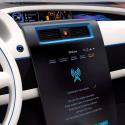In 2024, groundbreaking advancements in miniaturization, scalable manufacturing, and AI integration ushered in a new era for micro technologies. By 2025, these innovations are expected to gain significant momentum, revolutionizing industries and enabling more intelligent, efficient, and reliable systems to tackle pressing global challenges.
From personalized healthcare to data center optimization, micro device transfer—the ability to precisely place and integrate thousands of micro components—will drive innovations once thought impossible. These aren’t merely technological advancements but foundational elements of a smarter, more connected future.
Prediction 1: Democratized Manufacturing Will Bring Micro Technologies to the World
By 2025, manufacturing for microLEDs and other microdevices will undergo a seismic shift, moving from centralized, capital-intensive hubs to a more democratized model. Key to this transformation is the ability to seamlessly integrate advanced manufacturing techniques, like MicroSolid Printing, into existing production environments.
These innovations significantly reduce the need for massive capital expenditures, enabling more localized and flexible production of advanced micro-components. This approach allows manufacturers to scale production efficiently, adapting to market demands without being constrained by traditional methods.
The technology solves geopolitical challenges by facilitating localized production and reducing dependence on critical suppliers. This shift doesn't just address supply chain risks—it creates opportunities for innovation at every industry level.
Prediction 2: Miniaturization Will Redefine Consumer Electronics
As industries demand smaller, more powerful devices, miniaturization has become a cornerstone of innovation. It's not just about shrinking components; it's about integrating them seamlessly into compact, efficient systems.
Take wearable healthcare devices as an example. These devices must pack thousands of sensors into a discreet form factor to provide real-time, AI-driven health monitoring. With micro-device transfer, achieving this level of integration is possible. This technology ensures wearables can monitor everything from heart rhythms to hydration levels, transforming healthcare from reactive to preventive.
Prediction 3: AI Will Demand Real-Time, Multimodal Data from Miniaturized Systems
AI systems thrive on data—lots of it. However, as applications become more sophisticated, they require real-time, multimodal data streams from multiple sensors. The challenge is gathering and processing this data without creating bulky, impractical devices.
In 2025, microdevice transfer will bridge this gap by enabling highly integrated, miniaturized sensor systems. This shift will empower AI to deliver its promise of 24/7 preventive healthcare, autonomous decision-making, and real-time personalization.
For instance, consider the Apple Watch, which already uses microsensors to monitor heart health. Now imagine a future where similar devices track dozens of biomarkers in real-time, providing early warnings for chronic conditions. This is just the beginning of what's possible with microtechnologies.
Prediction 4: Energy-Efficient MicroLEDs Will Revolutionize Data Centers
As AI applications proliferate, data centers need help to keep pace. Traditional designs, reliant on wired connections, are power-hungry, space-intensive, and limited in bandwidth. By 2025, microLED technology will revolutionize data centers by enabling light-based data transfer.
This innovation leverages microLEDs to transmit vast data with minimal energy consumption. It's a game-changer for industries grappling with rising energy costs and sustainability concerns. With smaller, more efficient components, data centers of the future will handle exponential growth in AI-driven workloads without breaking the bank—or the grid.
Prediction 5: AR Glasses Will Become Practical, Everyday Tools
By 2025, we can expect several products based on informative glasses that address application-oriented pain points. These AR glasses will transition from prototypes to essential work, learning, and play tools.
Advanced transfer technologies enable the integration of microLED displays, AI interfaces, and sensors into a sleek, lightweight form factor. The result? Glasses that don't just overlay information but transform how we perceive and interact with the world.
The Bigger Picture: Intelligence Everywhere
The trends reshaping healthcare, data centers, and AR converge around a singular goal: embedding intelligence into every device and system. From personalized health monitoring to immersive digital environments, the demand for seamless, real-time data processing drives a new wave of micro-technology innovation.
By 2025, these advancements will create products that are not only smaller and smarter but also more accessible and sustainable. This isn't just a technological evolution—it's a paradigm shift defining the next decade.







